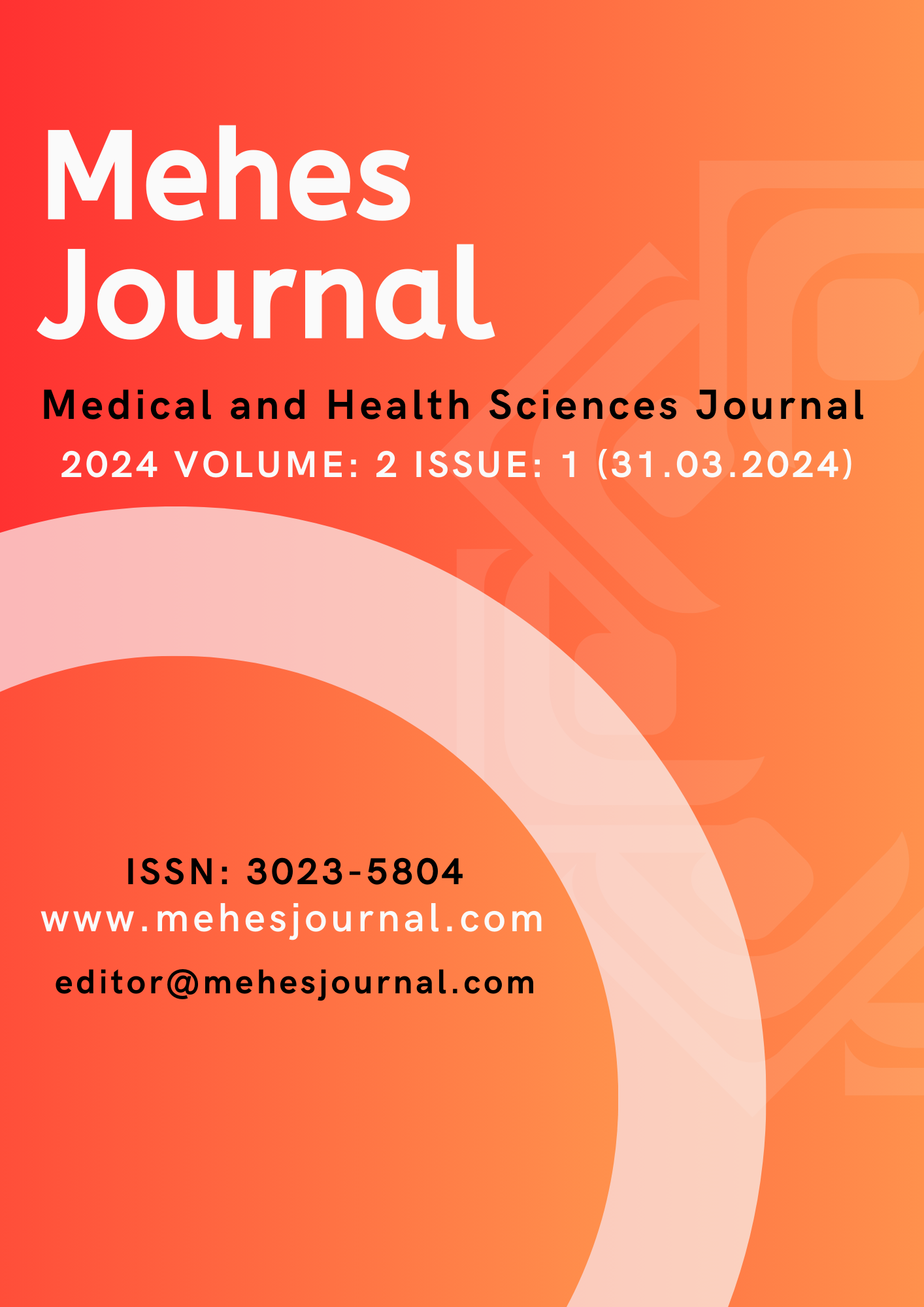Adipoz Doku ve Adissp (Adipose Secreted Signaling Protein)
DOI:
https://doi.org/10.5281/zenodo.10905679Anahtar Kelimeler:
Adissp, Adipose Secreted Signaling Protein, Yağ Dokusu, Kardiyovasküler HastalıklarÖzet
Adissp (Adipose Secreted Signaling Protein) yağ dokusundan salınan bir protein olup, beyaz yağ dokusunun termogenezisini ve glukoz homeostazını düzenleyen önemli bir adipokin olarak bilinmektedir. Adissp, termogenezisi artırarak glukoz homeostazını iyileştirir ve korur. Adissp ayrıca obezite ile ilişkili sistemik metabolik bozukluklara katkıda bulunan yağ dokusundan salınan biyoaktif bir madde olarak görev yapar. Obezite durumunda yağ dokusundan salınan adipokinlerin üretiminde veya salınımında bozukluklar, birçok hastalığın komplikasyonlarına neden olabilmekte, yaşam koşullarının kalitesini düşürebilmekte ve mortalite oranını artırabilmektedir. Bu protein, yağ dokusundan salınan ve metabolik etkilere sahip olan önemli bir moleküldür. Bu derlemede yağ dokusu ve Adissp hakkında bilgiler verilmiştir.
Referanslar
Mazurek T, Zhang L, Zalewski A, Mannion JD, Diehl JT, Arafat H, et al. "Human epicardial adipose tissue is a source of inflammatory mediators". Circulation. 2003; 108 (20): 2460–2466.
Seale P, Lazar MA. Brown fat in humans: turning up the heat on obesity. Diabetes. 2009; 58:1482–4.
Aarsland A, Chinkes D, Wolfe RR. "Hepatic and whole-body fat synthesis in humans during carbohydrate overfeeding". The American Journal of Clinical Nutrition. 1997; 65 (6): 1774–1782.
Kershaw EE, Flier JS. "Adipose tissue as an endocrine organ". The Journal of Clinical Endocrinology and Metabolism. 2004; 89 (6): 2548–2556.
Ye RZ, Richard G, Gévry N, Tchernof A, Carpentier AC. "Fat Cell Size: Measurement Methods, Pathophysiological Origins, and Relationships With Metabolic Dysregulations". Endocrine Reviews. 2002; 43 (1): 35–60.
Chen Q, Huang L, Pan D, Hu K, Li R, Friedline RH, Kim JK, Zhu LJ, Guertin DA, Wang YX. A brown fat-enriched adipokine Adissp controls adipose thermogenesis and glucose homeostasis. Nat Commun. 2022(10);13(1):7633.
Mancuso P. "The role of adipokines in chronic inflammation". ImmunoTargets and Therapy. 2016; 5: 47–56.
Pezeshkian M, Noori M, Najjarpour-Jabbari H, Abolfathi A, Darabi M, Darabi M, et al. "Fatty acid composition of epicardial and subcutaneous human adipose tissue". Metabolic Syndrome and Related Disorders. 2009; 7 (2): 125–131.
Hoehn K, Marieb EN. Anatomy & Physiology (3rd ed.). 2008. San Francisco, Calif.: Pearson/Benjamin Cummings.
Porter SA, Massaro JM, Hoffmann U, Vasan RS, O'Donnel CJ, Fox CS . "Abdominal subcutaneous adipose tissue: a protective fat depot?". Diabetes Care. 2009; 32 (6): 1068–1075.
Manolopoulos KN, Karpe F, Frayn KN. "Gluteofemoral body fat as a determinant of metabolic health". International Journal of Obesity. 2010; 34 (6): 949–959.
Birbrair A, Zhang T, Wang ZM, Messi ML, Enikolopov GN, Mintz A, Delbono O. "Role of pericytes in skeletal muscle regeneration and fat accumulation". Stem Cells and Development. 2013; 22 (16): 2298–2314.
Snel M, Jonker JT, Schoones J, Lamb H, de Roos A, Pijl H, et al. "Ectopic fat and insulin resistance: pathophysiology and effect of diet and lifestyle interventions". International Journal of Endocrinology. 2012: 983814.
Dhaliwal SS, Welborn TA. "Central obesity and multivariable cardiovascular risk as assessed by the Framingham prediction scores". The American Journal of Cardiology. 2009; 103 (10): 1403–1407.
Atzmon G, Yang XM, Muzumdar R, Ma XH, Gabriely I, Barzilai N (November 2002). "Differential gene expression between visceral and subcutaneous fat depots". Hormone and Metabolic Research. 34 (11–12): 622–628.
Baglioni S, Cantini G, Poli G, Francalanci M, Squecco R, Di Franco A, et al. "Functional differences in visceral and subcutaneous fat pads originate from differences in the adipose stem cell". PLOS ONE. 2012; 7 (5): e36569.
Wang GX, Zhao XY, Meng ZX, Kern M, Dietrich A, Chen Z, et al. The brown fat-enriched secreted factor Nrg4 preserves metabolic homeostasis through attenuation of hepatic lipogenesis. Nat. Med. 2014; 20: 1436–1443.
Stanford KI, Middelbeek RJ, Townsend KL, An D, Nygaard EB, Hitchcox KM, et al. Brown adipose tissue regulates glucose homeostasis and insulin sensitivity. J. Clin. Investig. 2013; 123: 215–223.
Stanford KI, Middelbeek RJ, Townsend KL, Lee MY, Takahashi H, So K, et al. A novel role for subcutaneous adipose tissue in exercise-induced improvements in glucose homeostasis. Diabetes. 2015; 64: 2002–2014.
Fagerberg L, Hallström BM, Oksvold P, Kampf C, Djureinovic D, Odeberg J, et al. Analysis of the human tissue-specificexpression by genome-wide integration of transcriptomics and antibodybased proteomics. Mol. Cell Proteom. 2014; 13: 397–406.
Lee YH, Nair S, Rousseau E, Allison DB, Page GP, Tataranni PA, Bogardus C, Permana PA. Microarray profiling of isolated abdominal subcutaneous adipocytes from obese vs non-obese Pima Indians: increased expression of inflammation-related genes. Diabetologia. 2005; 48: 1776–1783.
Civelek M, Wu Y, Pan C, Raulerson CK, Ko A, He A, et al. Genetic regulation of adipose gene expression and cardio-metabolic traits. Am. J. Hum. Genet. 2017; 100: 428–443.
İndir
Yayınlanmış
Nasıl Atıf Yapılır
Sayı
Bölüm
Lisans
Telif Hakkı (c) 2024 MEHES JOURNAL

Bu çalışma Creative Commons Attribution 4.0 International License ile lisanslanmıştır.










